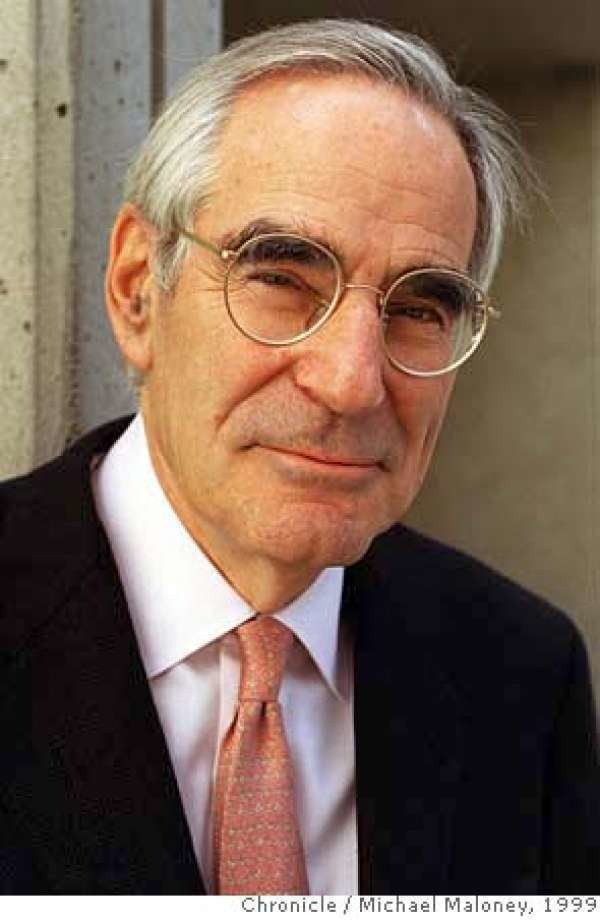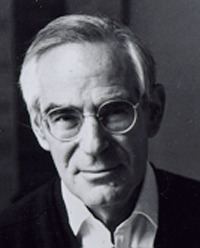Nationality American Role Journalist Name David Halberstam | Genre Non-fiction | |
 | ||
Born April 10, 1934New York City, U.S. ( 1934-04-10 ) Occupation Journalist, historian, writer Spouse Jean Sandness Butler (m. 1979–2007), Elzbieta Czyzewska (m. 1965–1977) Movies Rowing Through, The Teammates: A Portrait of a Friendship Books The Best and the Brightest, The Fifties, The Coldest Winter: A, The Breaks of the Game, Playing for Keeps: Michael J Similar People Elzbieta Czyzewska, Neil Sheehan, Malcolm Browne, Michael J Halberstam, Glenn Stout | ||
Children Julia Sandness Halberstam | ||
David halberstam the coldest winter part one
David Halberstam (April 10, 1934 – April 23, 2007) was an American journalist and historian, known for his work on the Vietnam War, politics, history, the Civil Rights Movement, business, media, American culture, and later, sports journalism. He won a Pulitzer Prize for International Reporting in 1964. In 2007, while doing research for a book, Halberstam was killed in a car crash.
Contents
- David halberstam the coldest winter part one
- David halberstam america then and now 04 27 06
- Early life and education
- Career
- Vietnam
- Civil Rights Movement and Poland
- Foreign policy media works
- Sports writing
- Later years
- Death
- Mentor to other authors
- Criticism
- Awards and honors
- Books
- References

David halberstam america then and now 04 27 06
Early life and education

Halberstam was born in New York City and raised in Winsted, Connecticut, where he was a classmate of Ralph Nader, moving to Yonkers, New York and graduating from Roosevelt High School in 1951. In 1955 he graduated from Harvard College in the bottom third of his class with a BA after serving as managing editor of The Harvard Crimson.
Career
Halberstam's journalism career began at the Daily Times Leader in West Point, MS, the smallest daily newspaper in Mississippi. He covered the beginnings of the Civil Rights Movement for The Tennessean in Nashville.
Vietnam
Halberstam arrived in Vietnam in the middle of 1962, to be a full-time Vietnam reporter for The New York Times. Halberstam, like many other US journalists covering Vietnam, relied heavily for information on Phạm Xuân Ẩn, who was later revealed to be a secret North Vietnamese agent.
In 1963, Halberstam received a George Polk Award for his reporting at The New York Times, including his eyewitness account of the self-immolation of Vietnamese Buddhist monk Thích Quảng Đức.
During the Buddhist crisis, he and Neil Sheehan debunked the claim by the Diệm regime that the Army of the Republic of Vietnam regular forces had perpetrated the brutal raids on Buddhist temples, which the American authorities had initially believed, but that the Special Forces, loyal to Diệm's brother and strategist Nhu, had done so to frame the army generals. He was also involved in a scuffle with Nhu's secret police after they punched fellow journalist Peter Arnett while the pressmen were covering a Buddhist protest.
Halberstam left Vietnam in 1964, at age 30, and was awarded the Pulitzer Prize for International Reporting that year. He is interviewed in the 1968 documentary film on the Vietnam War entitled In the Year of the Pig.
Civil Rights Movement and Poland
In the mid-1960s, Halberstam covered the Civil Rights Movement for The New York Times. He was sent on assignment to Poland, where he soon became 'an attraction from behind the Iron Curtain' to the artistic boheme in Warsaw. The result of that fascination was a 12-year marriage to one of the most popular young actresses of that time, Elżbieta Czyżewska, on June 13, 1965.
Initially well received by the communist regime, two years later he was expelled from the country as persona non grata for publishing an article in The New York Times, criticizing the Polish government. Czyżewska followed him, becoming an outcast herself; that decision disrupted her career in the country where she was a big star, adored by millions. In the spring of 1967, Halberstam travelled with Martin Luther King Jr. from New York City to Cleveland and then to Berkeley, California for a Harper's article, "The Second Coming of Martin Luther King". While at the Times, he gathered material for his book The Making of a Quagmire: America and Vietnam during the Kennedy Era.
Foreign policy, media works
Halberstam next wrote about President John F. Kennedy's foreign policy decisions on the Vietnam War in The Best and the Brightest. In 1972, Halberstam went to work on his next book, The Powers That Be, published in 1979 and featuring profiles of media titans like William S. Paley of CBS, Henry Luce of Time magazine, and Phil Graham of The Washington Post.
In 1980 his brother, cardiologist Michael J. Halberstam, was shot and killed during a home invasion by escaped convict and prolific burglar Bernard C. Welch, Jr. His only public comment related to his brother's murder came when he and Michael's widow castigated Life magazine, then published monthly, for paying Michael's killer $9,000 to pose in jail for color photographs that appeared on inside pages of the February 1981 edition of Life.
In 1991, Halberstam wrote The Next Century, in which he argued that, after the end of the Cold War, the United States was likely to fall behind economically to other countries such as Japan and Germany.
Sports writing
Later in his career, Halberstam turned to sports, publishing The Breaks of the Game, an inside look at Bill Walton and the 1979-80 Portland Trail Blazers basketball team; Summer of '49, on the baseball pennant race battle between the New York Yankees and Boston Red Sox; October 1964, on the 1964 World Series between the New York Yankees and St. Louis Cardinals; Playing for Keeps, an ambitious book on Michael Jordan in 1999; The Teammates: A Portrait of a Friendship, focusing on the relationships between several members of the Boston Red Sox in the 1940s; and The Education of a Coach, about New England Patriots head coach Bill Belichick. Much of his sports writing, particularly his baseball books, focuses on the personalities of the players and the times they lived in as much as on the games themselves.
In particular, Halberstam depicted the 1949 Yankees and Boston Red Sox as symbols of a nobler era, when blue-collar athletes modestly strove to succeed and enter the middle class, rather than making millions and defying their owners and talking back to the press. In 1997, Halberstam received the Elijah Parish Lovejoy Award as well as an honorary Doctor of Laws degree from Colby College.
Later years
After publishing four books in the 1960s, including the novel The Noblest Roman, The Making of a Quagmire, and The Unfinished Odyssey of Robert Kennedy, he wrote three books in the 1970s, four books in the 1980s, and six books in the 1990s, including his 1999 The Children which chronicled the 1959–1962 Nashville Student Movement. He wrote four more books in the 2000s and was working on at least two others at the time of his death.
In the wake of 9/11, Halberstam wrote a book about the events in New York City, Firehouse, which describes the life of the men from Engine 40, Ladder 35 of the New York City Fire Department. The Coldest Winter: America and the Korean War, the last book Halberstam completed, was published posthumously in September 2007.
Death
Halberstam died in a traffic collision on April 23, 2007 in Menlo Park, California, thirteen days after his 73rd birthday. He was enroute to an interview with former New York Giants quarterback Y. A. Tittle for a book about the 1958 championship game between the Giants and the Baltimore Colts. After Halberstam's death, the book project was taken over by Frank Gifford, who played for the losing New York Giants in the 1958 game, and was titled The Glory Game, published by HarperCollins in October 2008 with an introduction dedicated to David Halberstam.
Mentor to other authors
Howard Bryant in the Acknowledgments section of Juicing the Game, his 2005 book about steroids in baseball, said of Halberstam's assistance: "He provided me with a succinct road map and the proper mind-set." Bryant went on to quote Halberstam on how to tackle a controversial non-fiction subject: "Think about three or four moments that you believe to be the most important during your time frame. Then think about what the leadership did about it. It doesn't have to be complicated. What happened, and what did the leaders do about it? That's your book."
Criticism
Pulitzer Prize-winning Korean War correspondent Marguerite Higgins was the staunchest pro-Diệm journalist in the Saigon press corps, frequently clashing with her younger male colleagues such as Neil Sheehan, Peter Arnett, and Halberstam. She claimed they had ulterior motives, saying "reporters here would like to see us lose the war to prove they're right."
Conservative military and diplomatic historian Mark Moyar claimed that Halberstam, along with fellow Vietnam journalists Neil Sheehan and Stanley Karnow, helped to bring about the 1963 South Vietnamese coup against President Diệm by sending negative information on Diệm to the U.S. government in news articles and in private, all because they decided Diệm was unhelpful in the war effort. Moyar claims that much of this information was false or misleading. Sheehan, Karnow, and Halberstam all won Pulitzer Prizes for their work on the war.
Newspaper opinion editor Michael Young posits that Halberstam saw Vietnam as a moral tragedy, with America's hubris bringing about its downfall. Young writes that Halberstam reduced everything to human will, turning his subjects into agents of broader historical forces and coming off like a Hollywood movie with a fated and formulaic climax.
